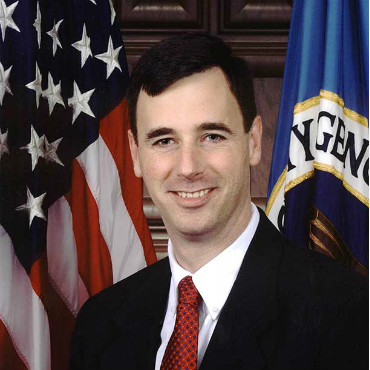IoT cybersecurity a hot topic for White House adviser

A White House cybersecurity adviser warns on the interconnected ecosystem of the internet of things.

Rob Joyce drew an important lesson about cybersecurity from his internet-connected HVAC system.
In remarks at the Department of Homeland Security's 2017 Cybersecurity Showcase and Technical Workshop on June 11, White House Cybersecurity Coordinator Rob Joyce, said a lapse in his IoT security has already made him a little hot under the collar.
In his speech, Joyce detailed a cautionary tale of his personal experience with the programmable thermostat at his house one summer day. He said the minor personal inconvenience could foreshadow a growing problem with the increasing number of internet-connected devices.
Joyce said his home's air conditioning system had been signed up for a power company program that allows the company to turn the system off for short periods during peak electrical consumption hours to conserve power. The AC system had been enrolled in the program by his home's previous owner -- who didn't inform Joyce that the unit was part of the program.
It wasn't until Joyce woke up one morning in a sweltering house and called an HVAC repairman that he became aware that his air conditioning had been "hacked" by the program that was running without his knowledge.
Joyce, a self-professed "tinkerer," also said he had made and installed a device on his clothes washer to text him when the machine had finished its job. Even that simple device requires protection. "I have to patch my washing machine," he said, noting that the number of devices with embedded connection capabilities is exploding.
Unknown "shadow IT" in federal, as well as public, networks is a "huge issue" for cybersecurity. There are problems with knowing who is patching what and when, as well as who is responsible for doing the security work, he said.
That explosion of interconnections and resulting responsibilities, he said, are among the important background elements that shaped the President's Executive Order on cybersecurity and how it addresses security for federal networks and critical infrastructure.
The DHS showcase brought together hundreds of private- and public-sector interests to see over 100 emerging and developed cybersecurity technologies that DHS S&T has fostered.
Controlling cybersecurity vulnerabilities, Joyce said, isn't going to get any easier as computing power and sensors increasingly become integral to a growing percentage of consumer devices.
"You have to understand the environment. You can't protect what you don't know about," he said.
DHS, said Doug Maughan, director of the DHS S&T's Cybersecurity Division, is open to big ideas about how to protect federal networks into the future.
The agency is about to open a discussion with industry and other interested parties on how to develop a more "holistic" approach to cybersecurity infrastructure across the federal government. Maughan said DHS S&T is "in the middle" of that effort.
The agency will publish a notice in the next six weeks in the Federal Register asking for input on the effort, he said. "The notice will be the first of several documents" that the agency will issue to take a longer view of how to deal with cybersecurity, he said.


